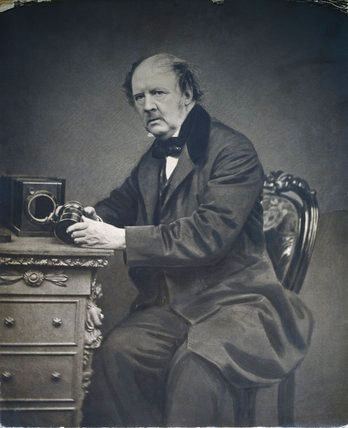William Henry Fox Talbot was born on 11 February 1800 in Melbury, Dorset, into a well-connected family. His father died when he was less than a year old and he and his mother lived in a succession of homes until she remarried in 1804. Talbot went to Cambridge University in 1817.
In 1832, he married Constance Mundy and the same year was elected as MP for Chippenham. In 1833, while visiting Lake Como in Italy, his lack of success at sketching the scenery prompted him to dream up a new machine with light-sensitive paper that would make the sketches for him automatically. On his return to England, he began work on this project at his home at Lacock Abbey in Wiltshire.
Thomas Wedgwood had already made photograms - silhouettes of leaves and other objects - but these faded quickly. In 1827, Joseph Nicéphore de Niepce had produced pictures on bitumen, and in January 1839, Louis Daguerre displayed his 'Daguerreotypes' - pictures on silver plates - to the French Academy of Sciences. Three weeks later, Fox Talbot reported his 'art of photogenic drawing' to the Royal Society. His process based the prints on paper that had been made light sensitive, rather than bitumen or copper-paper.
Fox Talbot went on to develop the three primary elements of photography: developing, fixing, and printing. Although simply exposing photographic paper to the light produced an image, it required extremely long exposure times. By accident, he discovered that there was an image after a very short exposure. Although he could not see it, he found he could chemically develop it into a useful negative. The image on this negative was then fixed with a chemical solution. This removed the light-sensitive silver and enabled the picture to be viewed in bright light. With the negative image, Fox Talbot realised he could repeat the process of printing from the negative. Consequently, his process could make any number of positive prints, unlike the Daguerreotypes. He called this the 'calotype' and patented the process in 1841. The following year was rewarded with a medal from the Royal Society for his work.
Fox Talbot was also an eminent mathematician, an astronomer and archaeologist, who translated the cuneiform inscriptions from Nineveh. He died on 11 September 1877.
Source: BBC

